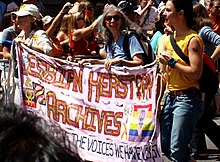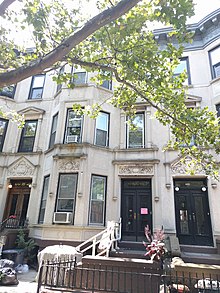
The New York City Landmarks Preservation Commission (LPC) is the New York City agency charged with administering the city's Landmarks Preservation Law. The LPC is responsible for protecting New York City's architecturally, historically, and culturally significant buildings and sites by granting them landmark or historic district status, and regulating them after designation. It is the largest municipal preservation agency in the nation. As of July 1, 2020, the LPC has designated more than 37,800 landmark properties in all five boroughs. Most of these are concentrated in historic districts, although there are over a thousand individual landmarks, as well as numerous interior and scenic landmarks.
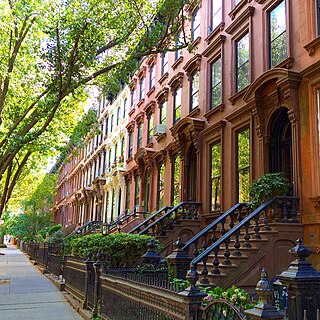
Park Slope is a neighborhood in western Brooklyn, New York City, within the area once known as South Brooklyn. Park Slope is roughly bounded by Prospect Park and Prospect Park West to the east, Fourth Avenue to the west, Flatbush Avenue to the north, and Prospect Expressway to the south. Generally, the section from Flatbush Avenue to Garfield Place is considered the "North Slope", the section from 1st to 9th Street is considered the "Center Slope", and south from 9th Street, the "South Slope". The neighborhood takes its name from its location on the western slope of neighboring Prospect Park. Fifth Avenue and Seventh Avenue are its primary commercial streets, while its east–west side streets are lined with brownstones and apartment buildings.

One, Inc., or One Incorporated, was one of the first gay rights organizations in the United States, founded in 1952.

McCarren Park is a public park in Brooklyn, New York City. It is located on the border of Williamsburg and Greenpoint and is bordered by Nassau Avenue, Bayard Street, Lorimer Street and North 12th Street. The park contains facilities for recreational softball, volleyball, soccer, handball, and other games. It is also used for sunbathing and dog-walking. It also includes the McCarren Play Center, which consists of a recreation center and a pool. McCarren Park is maintained by the New York City Department of Parks and Recreation.
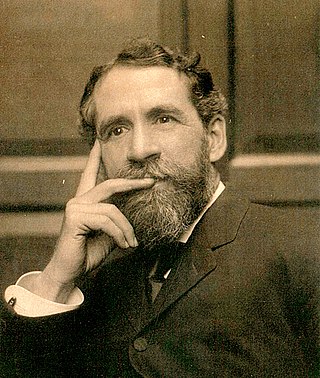
William Bunker Tubby was an American architect who was particularly notable for his work in New York City.
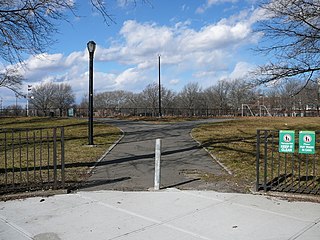
Red Hook Recreation Area, also known as Red Hook Park, is a 58.5-acre (237,000 m2) public park in the Red Hook neighborhood of Brooklyn, New York City, composed of several segments centered around Bay Street. The park's recreational facilities include handball courts, softball fields, a soccer and football field, and a running track. The Sol Goldman Play Center, within the block bounded by Bay, Henry, Lorraine and Clinton Streets, consists of a brick bathhouse and two pools. The park is operated by the New York City Department of Parks and Recreation, also known as NYC Parks.

The Center for Brooklyn History is a museum, library, and educational center founded in 1863 that preserves and encourages the study of Brooklyn's 400-year history. The center's Romanesque Revival building, located at Pierrepont and Clinton Streets in Brooklyn Heights, was designed by George B. Post and built in 1878–1881 by David H. King Jr., is a National Historic Landmark and part of New York City's Brooklyn Heights Historic District. The CBH houses materials relating to the history of Brooklyn and its people, and hosts exhibitions which draw over 9,000 members a year. In addition to general programming, the CBH serves over 70,000 public school students and teachers annually by providing exhibit tours, educational programs and curricula, and making its professional staff available for instruction and consultation.
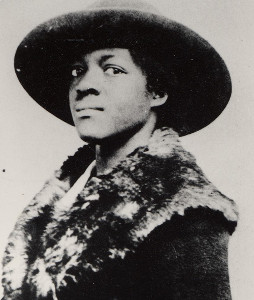
Mabel Hampton was an American lesbian activist, a dancer during the Harlem Renaissance, and a volunteer for both Black and lesbian/gay organizations. She was a significant contributor to the Lesbian Herstory Archives.

Joan Nestle is a Lambda Award winning writer and editor and a founder of the Lesbian Herstory Archives, which holds, among other things, everything she has ever written. She is openly lesbian and sees her work of archiving history as critical to her identity as "a woman, as a lesbian, and as a Jew."
Joan E. Biren or JEB is an American feminist photographer and film-maker, who dramatizes the lives of LGBT people in contexts that range from healthcare and hurricane relief to Womyn’s Music and anti-racism. For portraits, she encourages sitters to act as her “muse”, rather than her “subject”. Biren was a member of The Furies Collective, a short-lived but influential lesbian commune.
The Salsa Soul Sisters, today known as the African Ancestral Lesbians United for Societal Change, is the oldest black lesbian organization in the United States.Operating from 1974 to 1993, the Salsa Soul Sisters identified as lesbians, womanists and women of color, based in New York City Arguments within the Salsa Soul Sisters resulted in the disbanding of the Salsa Soul Sisters into two groups, Las Buenas Amigas made for Latinas, and African Ancestral Lesbians United for Societal Change made for African-diaspora lesbians.
The Gay Academic Union (GAU) was a group of LGBT academics who aimed at making the academia more amenable to the LGBT community in the United States. It was formed in April 1973, just four years after the Stonewall riots, held 4 yearly conferences and conducted other scholarly activities. It disbanded some time after that.

The 14th Regiment Armory, also known as the Eighth Avenue Armory and the Park Slope Armory, is a historic National Guard armory building located on Eighth Avenue between 14th and 15th Streets in the South Slope neighborhood of Brooklyn, New York City, United States. The building is a brick and stone castle-like structure, and designed to be reminiscent of medieval military structures in Europe. It was built in 1891–95 and was designed in the Late Victorian style by William A. Mundell.

New York City has been described as the gay capital of the world and the central node of the LGBTQ+ sociopolitical ecosystem, and is home to one of the world's largest and most prominent LGBTQ+ populations. Brian Silverman, the author of Frommer's New York City from $90 a Day, wrote the city has "one of the world's largest, loudest, and most powerful LGBT communities", and "Gay and lesbian culture is as much a part of New York's basic identity as yellow cabs, high-rise buildings, and Broadway theatre". LGBT travel guide Queer in the World states, "The fabulosity of Gay New York is unrivaled on Earth, and queer culture seeps into every corner of its five boroughs". LGBT advocate and entertainer Madonna stated metaphorically, "Anyways, not only is New York City the best place in the world because of the queer people here. Let me tell you something, if you can make it here, then you must be queer."
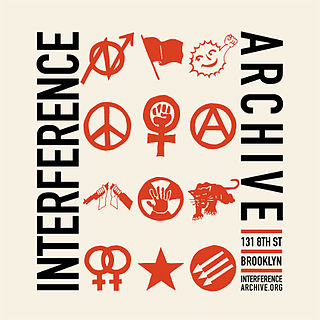
Interference Archive is a volunteer-run library, gallery, and archive of historical materials related to social and political activism and movements. Located in the Park Slope neighborhood of Brooklyn, New York City, at 314 7th Street, with in the zip code 11215, its mission is "to explore the relationship between cultural production and social movements."
The following is a timeline of lesbian, gay, bisexual, transgender and queer (LGBTQ) journalism history.

Sunset Park is a 24.5-acre (9.9 ha) public park in the neighborhood of Sunset Park, Brooklyn, New York City, between 41st and 44th Streets and 5th and 7th Avenues. The modern-day park contains a playground, recreation center, and pool. The recreation center and pool comprise the Sunset Play Center, which was designated as both an exterior and interior landmark by the New York City Landmarks Preservation Commission. The park is operated by the New York City Department of Parks and Recreation, also known as NYC Parks.
Queer community archives are a subset of the larger body of community archives, which are archives and personal collections maintained by community groups who desire to document their cultural heritage based on shared experiences, interests, and/or identities. As such, queer community archives are collections that exist to maintain the historical record of the LGBT community and broader queer community. The term queer community archives, also called gay and lesbian archives, refers to a diverse array of community projects, organizations, and public institutions that maintain these histories.
Deborah Edel is an American activist, archivist, and psychologist. She is best known for co-founding the Lesbian Herstory Archives with Joan Nestle.




